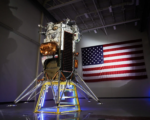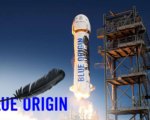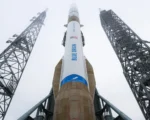Blue Origin’s New Shepard rocket is set to launch its NS-29 mission on January 31, 2025, at 11:30 a.m. EST from Launch Site One in West Texas. This uncrewed flight will focus on testing 30 experiments, with the majority of them being developed for NASA, aimed at advancing technologies crucial for lunar exploration. The mission is particularly notable for including a test designed to simulate lunar gravity, providing valuable insights for future missions to the Moon. This marks Blue Origin’s first suborbital mission of the year, further emphasizing its commitment to supporting NASA’s Artemis program and the broader goals of space exploration.
Among the 30 experiments being carried out, 17 are being developed by NASA to tackle various challenges related to lunar exploration. One such experiment, the Electrostatic Dust Lofting project from NASA’s Kennedy Space Center, will study the behavior of lunar dust under ultraviolet light. This is vital for understanding how dust might affect lunar landers, rovers, and equipment on the Moon’s surface. Another significant project is Purdue University’s FEMTA, which aims to test a water-based microthruster for small satellites, a technology that could play a pivotal role in lunar missions. Additionally, Honeybee Robotics will conduct the H-Bee experiment, which examines how bubbles behave in thick liquids in low gravity, mimicking conditions on the Moon.
A key feature of the NS-29 mission is its lunar gravity simulation. To achieve this, the New Shepard capsule will use its reaction control thrusters to spin at about 11 revolutions per minute during the flight. This spinning action will generate an environment similar to the Moon’s one-sixth gravity for two minutes, allowing researchers to study how various materials and equipment behave under these unique conditions. This simulation will provide data that could accelerate the development of technologies needed for future lunar missions.
The data collected from the NS-29 mission will be invaluable in enhancing the technology used for planetary exploration and in shaping the tools needed for both scientific and commercial lunar missions. As NASA and its partners prepare for the challenges of returning to the Moon, experiments like those in the NS-29 mission are crucial in addressing the technical hurdles that come with such ambitious endeavors. Blue Origin’s efforts contribute significantly to the growing infrastructure for lunar exploration, supporting both governmental space programs and private industry goals.


















